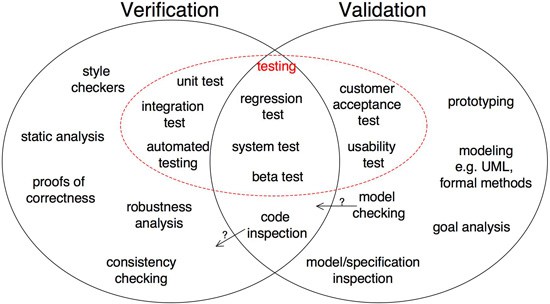Although validation and verification might mean the same, they are two different concepts that are used in software engineering. Just to avoid confusion, everything can be narrowed to this:
Validation: Are we building the right system?
Verification: Are we building the system right?
It is true that both of them require approval, but it dependes on the type of approval you need. Validation checks that what is being done, is what we need. This has to do with complying with the requirements that are proposed by the project managers. Verification, in the other hand, is to check that what we are doing, is being done the correct way. It is all about complying the requirements, so everything converges on reading the requirements the good way.
I’m might contradict myself a bit, but verification and validation do have things in common. These are processes in order to assure software quality and guess what, it also has to do with software testing and evaluation. This is a diagram of what could comprehend each of the concepts, and also what they do have in common.
Credit to Easterbrook, from here I obtained most of this content.




 And most important, they all have the same weight while taking decisions. There are no biased decisions in this topic. They all weigh the same because each one impacts the others in a certain way. For example, if the system is more complex, we might need the final user interface to be even more friendly due to the business requirements.
And most important, they all have the same weight while taking decisions. There are no biased decisions in this topic. They all weigh the same because each one impacts the others in a certain way. For example, if the system is more complex, we might need the final user interface to be even more friendly due to the business requirements.

